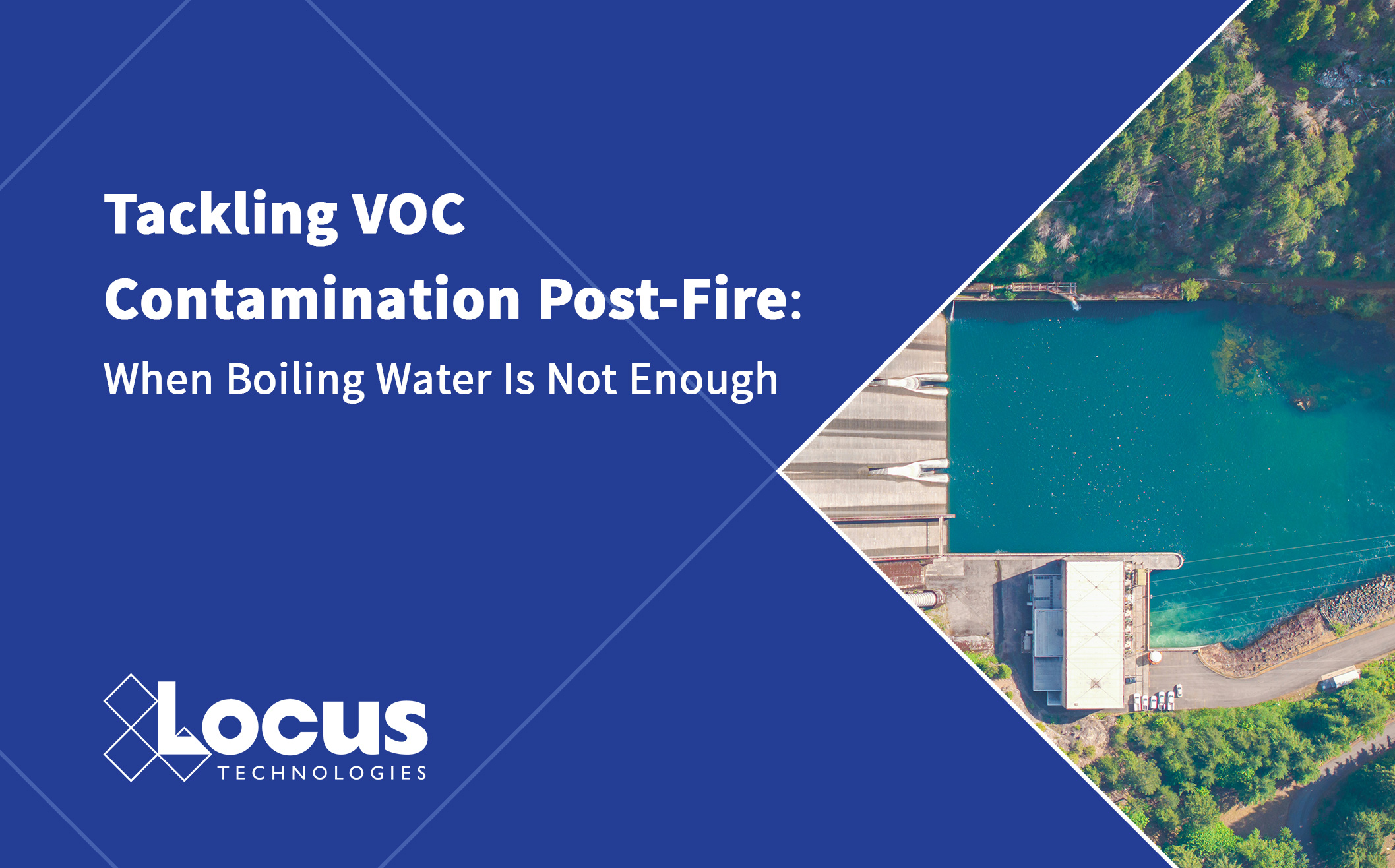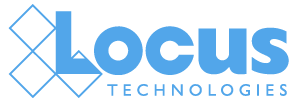Tackling VOC Contamination Post-Fire: When Boiling Water Is Not Enough
Supporting Environmental Water Quality Experts with Locus EIM Software

Fires unleash a cocktail of volatile organic compounds (VOCs) and other pollutants that can severely compromise water quality, as seen in incidents involving ash contamination and pipe breaches during the Tubbs Fire and Camp Fire in California.
Locus Environmental Information Management (EIM) software is pivotal in aiding water quality experts in such situations, ensuring effective monitoring, analysis, and restoration. Locus EIM software flexes to the most complex and dynamic environmental data, and this article explores one such application: using Locus EIM software to enhance VOC testing efforts after fires.
Understanding the Impacts of VOCs After a Fire
Fires introduce widespread water contamination through ash deposits, pipe degradation, and damaged infrastructure. Key risks include elevated Total Organic Carbon (TOC), heightened pH, and dangerous VOC levels, such as benzene, detected at concentrations as high as 40,000 µg/L in incident zones. These contaminants disrupt treatment processes, alter disinfection needs, and pose significant health hazards through exposure.
Boiling water contaminated with VOCs can worsen risks to humans and animals by enabling inhalation of harmful vapors, emphasizing the need for accurate pre-boil testing.
Conducting this pre-boil testing adds to the sampling burden during a chaotic disaster response. Locus EIM can help.
Locus EIM Software Supports VOC Testing Post-Fire
Comprehensive Data Collection
By using Locus EIM, water quality teams can upload VOC sampling results from certified labs in compliance-ready formats, ensuring precise tracking. Advanced validation captures pH, TOC, or benzene concentration anomalies, which are crucial for remediation insights.
Precision in Data Management
EIM eliminates inconsistencies by standardizing sample identifiers, units, and analytical methods. This guarantees data integrity and ensures accurate outputs, particularly in VOC testing scenarios.
Advanced Visualization Tools
Locus EIM includes charting and GIS mapping for VOC results. For example, time-series analyses and contour maps help visualize trends in VOC concentrations across different locations, providing actionable insights. The GIS mapping within Locus EIM offers real-time visualizations of VOC contamination hotspots, featuring charts, grids, and GIS maps that highlight trends and anomalies in water quality parameters. Time sliders can be used to track dispersion trends, while contour maps can predict the migration paths of affected water systems.
Predictive Analytics
Leveraging historical data models, Locus EIM identifies patterns in VOC levels pre- and post-fire, facilitating informed water treatment and bottleneck prevention strategies.
Streamlined Reporting
EIM automatically generates tailored reports for stakeholders, including VOC exceedance charts, reports tailored to VOC-specific limits, and compliance summaries, easing communication, regulatory approvals, saving significant time while ensuring compliance, and public transparency.
The Way Forward: Swift Action with Data-Driven Insights
Early VOC testing and robust data management cannot be overstated in wildfire-affected areas. With Locus EIM’s advanced tools, water quality experts gain a comprehensive platform to mitigate risks, optimize treatment processes, and ensure public health and safety.
Learn how Locus EIM transforms raw water quality test results into clear, actionable insights, enabling organizations to make informed decisions. Contact us to schedule a personalized demo and explore its transformative potential.
Locus is the only self-funded water, air, soil, biological, energy, and waste EHS software company that is still owned and managed by its founder. The brightest minds in environmental science, embodied carbon, CO2 emissions, refrigerants, and PFAS hang their hats at Locus, and they’ve helped us to become a market leader in EHS software. Every client-facing employee at Locus has an advanced degree in science or professional EHS experience, and they incubate new ideas every day – such as how machine learning, AI, blockchain, and the Internet of Things will up the ante for EHS software, ESG, and sustainability.



